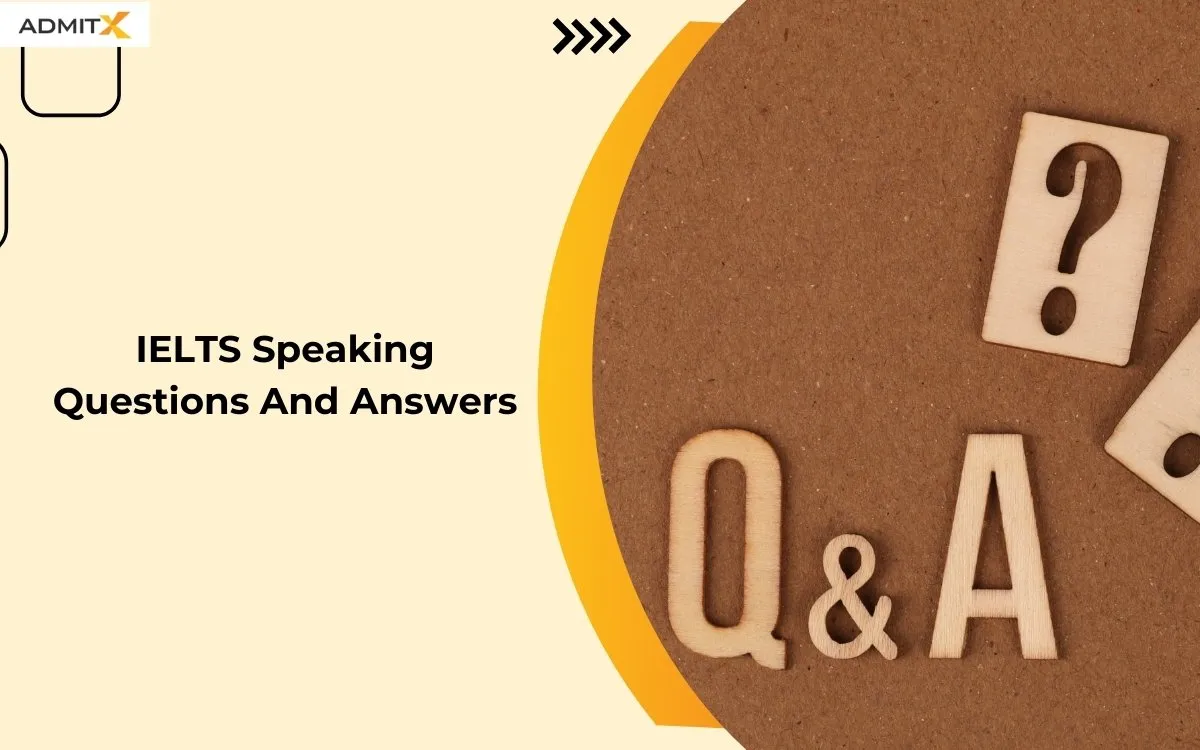
How to Get an Education Loan at a Lower Interest Rate?
Interest rate is an amount that is added on and above the principal loan amount. The repayment of the loan can be made through EMIs after the moratorium period, but the interest rate can be paid in a grace period to avoid financial burden.
In this blog, we have discussed the ways to reduce the interest rate on an education loan for abroad studies, along with a comparison between different lenders, types of interest rates, and factors affecting interest rates.
- Interest Rate on Education Loans for Abroad Studies
- Types of Interest Rates on Student Loans
- Deciding between Fixed and Variable Interest Rates
- How is Interest Rate Calculated on Education Loan for Abroad Studies?
- Importance of the Grace Period on Education Loans for Abroad Studies
- Popular Lenders in India - Comparison of Interest Rates
- Factors Affecting Interest Rate for an Education Loan
- Tips to get an Education Loan on Lower Interest Rates
- Conclusion
- FAQs
Interest Rate on Education Loans for Abroad Studies
An education loan is meant to provide financial assistance to students when they don’t have sufficient capital to fund their studies. In recent years, the trend to borrow student loans for studies abroad has increased due to inflation in the economy. This has caused a severe increase in the cost of study, including tuition fees, accommodation, and other student expenses.
When any student borrows money from lenders such as banks and other financial institutions, they have to pay some ‘extra’ amount on and above the principal amount every month as fixed by the lender, depending on various factors.
Types of Interest Rates on Student Loans
There are two types of interest rates on education loans for abroad studies:
Fixed Interest Rate
- The interest rate charged on the principal loan amount does not change throughout the repayment duration.
- It is not influenced by the condition of the market and the changes in policies by the Reserve Bank of India.
- Education loans taken on fixed interest rates provide a sense of certainty to borrowers because they can easily plan and execute their future financial decisions.
- EMIs paid at a fixed interest rate remain the same.
- Fixed interest rates might be marginally higher than variable interest rates if the borrower has a good credit score.
Variable Interest Rate
- The interest rate charged on the principal loan amount changes based on the repo rate changes of RBI.
- Market conditions can also influence the interest rate.
- Fluctuations in the interest rate can lead to changes in monthly payment amounts, which can hamper budgeting.
- If the borrower has a good credit score, then the variable interest rate might be lower than the fixed interest rate.
- If the interest rate increases, then EMI also increases. There is no effect on loan tenure and principal loan amount.
Deciding between Fixed and Variable Interest Rates
While taking a student loan, borrowers might get confused about whether to go with a fixed or a variable interest rate. Although both types of interest rates have their advantages and disadvantages, certain factors should be considered if they want to take an education loan for abroad studies, possibly at lower interest rates:
Degree of Risk Tolerance: Evaluating the comfort level or risk tolerance is an important attribute while opting for an education loan. It wholly depends on the borrower and their financial situation. Student loans taken on fixed interest rates can provide stability in repayment and certainty in financial planning. In contrast, those on variable interest rates provide uncertainty in both repayment amounts and financial planning.
Analysis of the Market: The student must get help from an expert financial advisor before opting for a particular type of education loan for abroad studies. If there is an expectation of reducing the repo rate, then taking a student loan at a variable interest rate is beneficial. However, if there is some degree of uncertainty going on in the market, lending a student loan at a fixed interest rate can be preferred.
Financial Goals: It includes planning or scheduling the repayment process and future economic scenarios in the family. If consistent budgeting is required, then the students must go for an education loan offered at a fixed interest rate due to the minimum risk involved.
Also read – Ways to Fund your Overseas Education
How is Interest Rate Calculated on Education Loan for Abroad Studies?
Typically, the education loan is offered at floating or variable interest rates by the lender. The lender can calculate this interest rate based on simple or compound interest calculations. Below, we have discussed the calculation method for both simple and compound interest:
Simple Interest
The simple interest on an education loan for abroad studies can be calculated on the loan amount by taking tenure under consideration. It is calculated as below:
SI= Principal amount x Interest Rate x Period
Here, the period denotes one year in which loan repayment is to be done.
Compound Interest
Lenders calculate the compound interest on the principal amount and accumulated interest rate. It is calculated as below:
A = P * (1 + r/n)^(n*t)
where:
A = Future Value of Amount
P = Principal Amount
r = rate of interest (in decimals)
n = number of times interest is compounded per period
t = number of periods the amount is due for
Importance of the Grace Period on Education Loans for Abroad Studies
When students borrow education loans, they are given some grace period. The grace period is the time duration in which they are exempted from paying the EMIs. After the grace period, they only need to pay interest rates. The grace period is different from the moratorium period because when the moratorium period ends, EMI payment is started. However, they need to pay interest rates even when the moratorium period is going on.
There are two types of grace periods offered by different lenders:
- Grace period with Interest Payments: Under this option, the borrower is only required to pay either partial or full interest rate on the disbursed amount. The lenders provide this option after simple interest rate calculation.
- Grace period without Interest Payments: Under this option, the borrowers are not required to pay any amount, even interest rate. The interest keeps on accumulating over time and can be paid collectively with the principal amount when the grace period ends.
From the desk of AdmitX, we suggest students opt for a grace period with interest payments since it provides the following benefits over a grace period without interest payments:
- The financial burden keeps on reducing on the student.
- When the grace period ends, only the principal amount is to be paid, which makes budgeting easier since students don’t need to think about the certainty or uncertainty of the interest rate.
- It makes the overall cost of education loans much lower.
- A proper repayment schedule can lead to the building of good credit scores, which is helpful for future financial investments.
Popular Lenders in India – Comparison of Interest Rates
Public Sector Banks
We have tabulated the popular public sector institutions of India along with the maximum loan amounts and interest rates on which they offer education loans.
| Lenders | Maximum Loan Amount (INR) | Interest Rate (per year) |
|---|---|---|
| State Bank of India | Upto 1.5 Crore | 8.00% - 10.85% |
| Canara Bank | Upto 1 Crore | 8.25% -10.50% |
| Punjab National Bank | Upto 1 Crore | 9.50% - 11.75% |
| Bank of India | Upto 40 Lakhs | 8.00% -9.25% |
| Indian Bank | Upto 90 Lakhs | 8.50% - 10.00% |
Private Sector Banks
We have tabulated the popular private sector institutions of India along with the interest rates on which they offer education loans.
| Lenders | Maximum Loan Amount (INR) | Interest Rate (per year) |
|---|---|---|
| Axis Bank | Upto 5 Crore | 9.15% - 10.15% |
| Kotak Mahindra Bank | Upto 85 Lakhs | 8.00% - 9.50% |
| IDBI Bank | Upto 90 Lakhs | 8.50% - 9.75% |
| ICICI Bank | Upto 2 Crore | 8.25% - 11.00% |
| Induslnd Bank | Upto 1.5 Crore | 9.14% - 10.75% |
Non-Banking Financial Corporations (NBFCs)
We have tabulated the popular NBFCs along with the interest rates on which they offer education loans to students in India.
| Lenders | Maximum Loan Amount (INR) | Interest Rate (per year) |
|---|---|---|
| Avanse | Upto 85 Lakhs | 8.50% - 10.75% |
| HDFC Credila | Upto 1.5 Crore | 10.50% - 11.00% |
| Auxilo | Upto 1 Crore | 9.25% - 10.50% |
| Incred | Upto 1 Crore | 9.50% - 11.25% |
| Eduvanz | Upto 75 Lakhs | 9.00% - 10.50% |
Factors Affecting Interest Rate for an Education Loan
While granting a student loan, lenders consider several factors to check the eligibility criteria and trustworthiness of both applicants and co-applicants. This helps lenders to develop a sense of security and authenticity about the borrower. Hence, before applying for an education loan for abroad studies at lower interest rates, students must meet the prescribed eligibility criteria to win the trust of the lender. Apart from eligibility criteria, the following factors should be kept in mind too:
Applicant’s Academic Profile: It includes a previous track record of the students that showcases achievements, marks and certifications that they have earned in academic pursuit. Students should be mindful of their accomplishments and honours because it can significantly affect not only loan amounts but also interest rates.
Co-Applicant’s Profile: The credit history and the source of income must be authenticated and valued because this is what lenders look for before granting a student loan. The role of the co-applicant is crucial in risk categorisation, and the desired loan amount at a lower interest rate is possible when they have proved the trustworthiness of the lender in them.
Type of Loan: Students must go for collateral or secured education loans since they grant them higher loan amounts at comparatively lower interest rates. Secured education loans also offer several benefits such as tax rebates, flexible repayment options and good credit scores if repayment is made on time.
Course and University: Lenders prefer those students who have been admitted to the world’s reputed institutions and listed courses that grant them abundant employment opportunities. Since it assures lenders about timely repayment of the education loan taken for abroad studies, they offer schemes at flexible and lower interest rates.
Government of India Interest Subsidy Scheme: Apart from other factors affecting interest rate for an education loan, Indian students should consider public sector banks to take a student loan because the interest rate offered by them is always lower by 1-2.5% than that provided by private banks and other NBFCs. It is part of the government’s scheme to promote education for all so that it can lead to the generation of enough workforce and employment.
CIBIL Score: It is understandable that at a young age, the student might not have sufficient CIBIL score required to get an education loan. In such cases, lenders consider the credit score of their parents/co-applicants. A CIBIL score above 700 can improve the chances of getting faster loan approval; otherwise, delay or sometimes rejection of loan application might occur.
Tips to get an Education Loan on Lower Interest Rates
- Students must seek merit-based scholarships in order to reduce the education loan amount required for abroad studies. This significantly reduces the interest rates on which repayments have to be made.
- Make extra payments to reduce the overall amount payable.
- Prefer to take a student loan with interest payment during the grace period because it prevents financial burden on the students when the grace period gets over.
- Explore the various schemes offered by lenders, preferably for students desiring to study abroad.
- Consider paying EMI with interest rate during the moratorium period to reduce the repayment amount when it gets over.
Conclusion
An education loan often provides great benefits to students by easing their path to choose academic programs, both inside and outside the country, without worrying about expenses. Lenders and other financial institutions understand this, and they offer a variety of schemes that students can avail to afford their cost of study. Interest rate is one of the significant factors that students must understand because it affects the repayment cost.
Students have both options: either pay only interest rate to reduce the repayment cost before the actual EMI payment gets started or pay the whole amount in one go after the moratorium period. Taking collateral loans can be the best way to reduce the interest rates on repayment.
FAQs
What CIBIL score is good for an education loan?
A CIBIL between 750 and 900 is considered good by lenders for taking an education loan. Since having a CIBIL score of 900 is ideal and near impossible, a score above 700 can increase the chances of loan approval.
Is taking an education loan risky?
Taking an education loan is not risky if the repayment is made on time without taking on more debt. In recent years, the number of education applications has increased due to increasing awareness of the value of good education. This is a sign that society is eliminating such misconceptions and continues to grow more positively.
Do lenders provide 100% education loans?
Most of the lenders do not provide 100% education loans as they consider various factors such as eligibility and competency of the students as well as co-applicants. Nearly 10-15% of the educational expenses have to be borne by students themselves.
If you are an aspirant looking to study at your dream university, book an appointment with AdmitX today and start your applications early to avail yourself of all the benefits.








